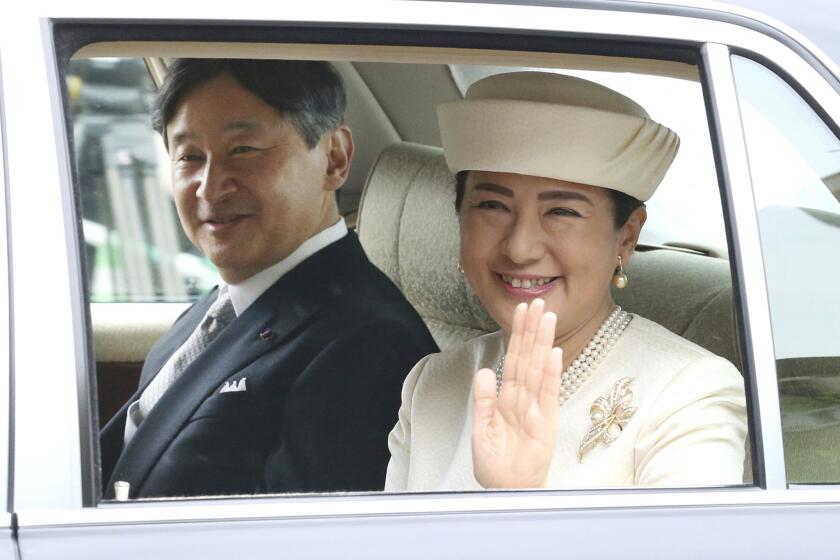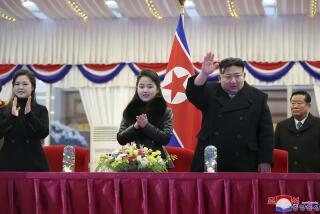Japan panel recommends keeping the imperial throne restricted to men

- Share via
TOKYO — A Japanese government panel has recommended keeping the country’s imperial throne restricted to male heirs, despite a sharply shrinking number of men in the royal family.
The panel submitted a report to Prime Minister Fumio Kishida on Wednesday proposing ways to ensure that there are enough potential successors, such as adopting single men from some of the 11 now-defunct royal households as potential heirs, and allowing female royals to retain their status after marrying commoners.
Both options would require a revision of the 1947 Imperial House Law, which largely preserves pre-World War II values.
The panel did not address the issue of whether the continuation of the current male-only succession system is workable.
With the practice of royal concubinage now abandoned, the size of the imperial family has declined to 17. Outside of his 86-year-old uncle, Prince Hitachi, Emperor Naruhito has only two possible successors: his younger brother, Crown Prince Akishino, and Akishino’s teenage son, Hisahito.
Naruhito’s only child, Aiko, a daughter, is not eligible to inherit the throne. Under current law, she must leave the family if she marries a commoner, like her cousin Mako, who married her college sweetheart last month.
Japan’s imperial palace has a new resident who earned an economics degree from Harvard, speaks at least five languages and has negotiated complicated trade deals as a diplomat.
The report said it wasn’t an appropriate time to discuss who would succeed Hisahito, who is still a teenager, NHK public television reported.
Kishida accepted the panel’s recommendations and thanked it for its “well-balanced discussion of an extremely important and difficult matter that involves the national foundation.” He said he would present the report to parliament for further consideration.
Discussion of imperial succession has continued for nearly 20 years.
Faced with a possible succession crisis in 2005, a panel of experts proposed that both male and female royals in the maternal line be allowed to ascend to the throne. But the suggestion met with harsh opposition from conservatives.
The proposal was rejected by then-Prime Minister Shinzo Abe’s conservative government the following year after the birth of Hisahito in September 2006 — the first birth of a male royal in 40 years.
More to Read
Sign up for Essential California
The most important California stories and recommendations in your inbox every morning.
You may occasionally receive promotional content from the Los Angeles Times.











